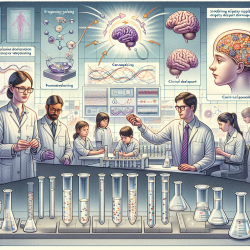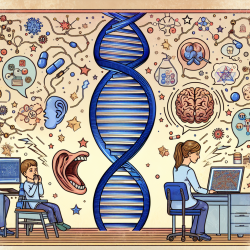Introduction
Noise-Induced Hearing Loss (NIHL) is a pervasive auditory disorder recognized by the World Health Organization as a leading contributor to global hearing loss. The recent review article, "From sound waves to molecular and cellular mechanisms: Understanding noise-induced hearing loss and pioneering preventive approaches," delves into the molecular intricacies of NIHL and explores potential preventive strategies. This blog aims to guide practitioners in enhancing their skills by implementing the research outcomes and encouraging further exploration.
Understanding the Molecular Mechanisms
The review highlights the significance of understanding the molecular and cellular mechanisms underlying NIHL. Key factors include oxidative stress, inflammation, and immune responses, which play crucial roles in the progression of NIHL. Practitioners can benefit from this knowledge by exploring targeted interventions that mitigate these biological processes.
Animal Models: A Gateway to Discovery
Animal models have emerged as indispensable tools in NIHL research. They allow researchers to simulate and study the impact of noise exposure on auditory structures. Practitioners can leverage findings from these models to gain insights into potential therapeutic targets and evaluate the efficacy of new drugs.
Preventive Strategies: A Proactive Approach
The review emphasizes the importance of preventive strategies in combating NIHL. Practitioners are encouraged to explore protective measures, such as the use of hearing protection devices and the implementation of noise control measures in occupational settings. Additionally, educational initiatives aimed at raising awareness about the risks of excessive noise exposure can contribute to reducing the prevalence of NIHL.
Encouraging Further Research
While the review provides valuable insights, it also highlights the need for continued research. Practitioners are encouraged to delve deeper into the genetic factors influencing susceptibility to NIHL and explore innovative therapeutic approaches. Collaborative efforts between researchers and clinicians can pave the way for groundbreaking advancements in the field.
Conclusion
By understanding the molecular mechanisms, utilizing animal models, and implementing preventive strategies, practitioners can play a pivotal role in addressing the challenges posed by NIHL. This approach not only deepens the current comprehension of NIHL but also has the potential to influence the shaping of public health policies, offering a nuanced perspective on this prevalent auditory disorder.
To read the original research paper, please follow this link: From sound waves to molecular and cellular mechanisms: Understanding noise?induced hearing loss and pioneering preventive approaches (Review).










